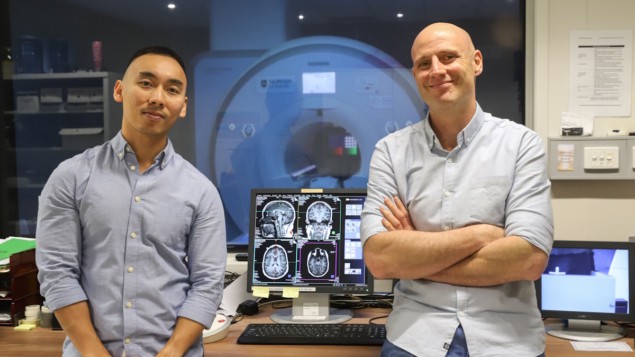
How does the human brain work? It depends on who you ask.
At school, you were likely taught that our brains contain billions of neurons that process inputs and help us form thoughts, emotions and movements. Ask imaging specialists, and you’ll learn about how we can see the brain in different ways using a variety of imaging techniques and about what we can learn from each image. Neuroscientists also will tell you about the interactions between neurons and related chemicals, such as dopamine and serotonin.
If you ask a subgroup of neuroscientists who focus on mathematical frameworks for how the brain’s shape influences its activity – an area of mathematical neuroscience called neural field theory – you’ll begin to understand the relationship between brain shape, structure and function in yet another way.
Neural field theory builds upon our conventional understanding of how the brain works. It uses the brain’s physical shape – the size, length and curvature of the cortex, and the three-dimensional shape of the subcortex – as a scaffold upon which brain activity happens over time and space. Scientists then model the brain’s macroscopic electrical activity using the brain’s geometry to impose constraints. Electrical activity along the cortex, for example, might be modelled as a superposition of travelling waves propagating through a sheet of neural tissue.
“The idea that the geometry of the brain can influence or constrain whatever activity happens inside is not a conventional neuroscience question, right? It’s a very esoteric question…There’s been decades of work in trying to map the intricate wiring of the brain, and we’ve thought that all the activity that comes out of the brain is driven by this intricate wiring,†says James Pang, a research fellow at Monash University’s Turner Institute for Brain and Mental Health.
In a study published in Nature, Pang and his colleagues have challenged this prevailing understanding by identifying a strong relationship between brain shape and functional MRI (fMRI) activity.
The researchers were studying natural resonances called eigenmodes, which occur when different parts of a system vibrate at the same frequency, such as the excitations that occur in the brain during a task-evoked fMRI scan. When they applied mathematical models from neural field theory to over 10,000 activity maps and fMRI data from the Human Connectome Project, the researchers found that cortical and subcortical activity results from excitation of brain-wide eigenmodes with long spatial wavelengths up to and exceeding 6 cm. This result contrasts with a leading belief that brain activity is localized.
“We have long thought that specific thoughts or sensations elicit activity in specific parts of the brain, but this study reveals that structured patterns of activity are excited across nearly the entire brain, just like the way in which a musical note arises from vibrations occurring along the entire length of a violin string, and not just an isolated segment,†says Pang in a press statement.

Machine learning provides insight into the human brain
Pang and his colleagues also compared how geometric eigenmodes, obtained from models of brain shape, performed relative to connectome eigenmodes, which are obtained from models of brain connectivity. They found that geometric eigenmodes imposed greater limits on brain activity than connectome eigenmodes, suggesting that the brain’s contours and curvature strongly influence brain activity – perhaps even to a greater extent than the complex interconnectivity between populations of neurons themselves.
Simply put, the scientists’ results challenge our knowledge of how the human brain works.
“We’re not saying that the connectivity in your brain is not important,†says Pang. “What we’re saying is that the shape of your brain also has a significant contribution. It’s highly likely that both worlds have some synergy…there’s been decades and decades of work from both sides of the research in the neural field theory world and the connectivity world, and both are important, in my opinion. This study opens up so many possibilities – we could study how geometric eigenmodes vary through neurodevelopment or are disrupted by clinical disorders, for example. It’s quite exciting.â€


